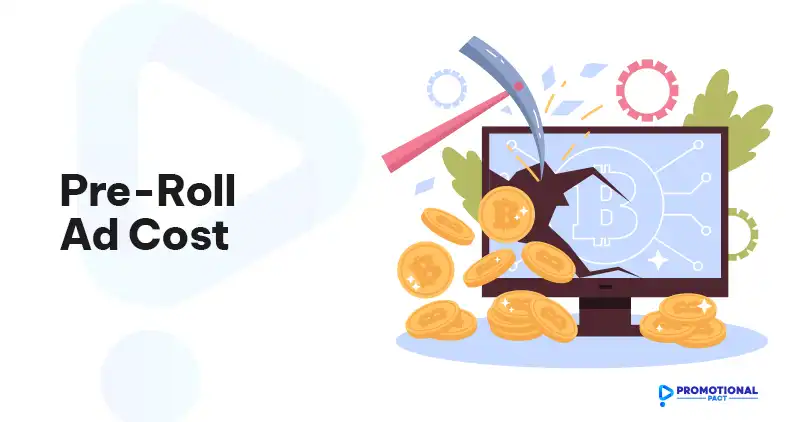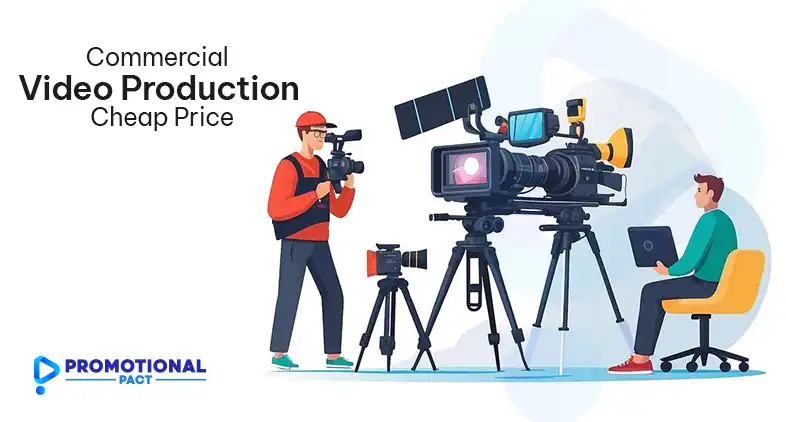Pre-roll ads, the short video advertisements that play before the main content, offer a unique opportunity to engage viewers right from the start. But since they offer a better chance at capturing your audience’s attention, it’s only natural that they’ll cost more than other type of video ads, especially mid and post-roll ads. So, how much does a pre-roll ad really cost?

The answer, like many aspects of digital marketing, isn’t straightforward. Pre-roll ad costs can vary widely, typically ranging from as little as $0.10 to upwards of $30 per thousand impressions (CPM), depending on various factors. To help you better understand this, we’ve created this article that breaks down the costs, considerations, and strategies for effective pre-roll advertising.
How Pre-Roll Ad Pricing Models Work
When it comes to pre-roll ad pricing, two main models dominate the landscape: Cost Per Thousand Impressions (CPM) and Cost Per View (CPV). Let’s dive into each of these to understand how they work and what you can expect to pay.
Cost Per Thousand Impressions (CPM)

Image: Sample pricing chart for average CPM range in different platforms
CPM is the most common pricing model for pre-roll ads. With this approach, advertisers pay a set amount for every thousand times their ad is displayed, regardless of whether viewers watch the entire ad or take any action. CPM rates can vary significantly based on the platform, targeting options, and competition.
Here’s a breakdown of average CPM ranges across popular platforms:
| Platform | Average CPM Range |
| YouTube | $0.10 – $3.00 |
| Hulu | $5.00 – $10.00 |
| OTT Platforms | $10.00 – $30.00+ |
| Niche Websites | $0.50 – $5.00 |
It’s important to note that these ranges are averages, and your actual costs may fall outside these bounds depending on your specific campaign parameters.
Cost Per View (CPV)
CPV is another pricing model that is particularly popular on YouTube. With CPV, advertisers only pay when a viewer watches a significant portion of the ad (usually 30 seconds or the entire duration if shorter) or interacts with it. CPV rates typically fall between $0.02 and $0.05 but can be higher for highly targeted campaigns.
How Pre-Roll Ad Costs Differ
Several key factors can impact the cost of your pre-roll ad campaign:
- Platform Choice: Different platforms come with varying price tags. YouTube, for instance, offers a wide reach but can be competitive, while niche websites might offer more targeted audiences at potentially lower costs.
- Audience Targeting: The more specific your targeting, the higher your costs may be. Reaching high-income demographics or users with specific interests often comes at a premium.
- Ad Length: Shorter ads (like 6-second bumpers) generally cost less than longer 15 or 30-second spots. However, longer ads give you more time to convey your message.
- Video Quality: High-production-value ads might cost more to create, but they can also lead to better engagement and conversion rates.
- Competition: In popular niches or during peak advertising seasons, increased competition can drive up costs.
Picture suggestion: An infographic showing the factors
. Search term: “Factors affecting digital ad costs infographic”
How Much Pre-Roll Ads Cost in Different Platforms
Let’s take a closer look at pricing on some major platforms:
YouTube Pre-Roll Ad Costs
YouTube offers several ad formats, including TrueView in-stream ads and bumper ads. TrueView ads, which allow viewers to skip after 5 seconds, typically cost between $0.10 and $0.30 per view. Bumper ads, which are non-skippable 6-second spots, are usually priced on a CPM basis, ranging from $1 to $4.
Social Media Pre-Roll Ad Costs
Facebook and Instagram offer in-stream video ads with CPM rates typically falling between $1 and $3. Twitter’s pre-roll ads usually range from $0.50 to $2 CPM, while LinkedIn, catering to a professional audience, can command higher rates of $6 to $12 CPM.
Streaming Service Pre-Roll Ad Costs
Hulu, a popular streaming platform, charges premium rates due to its engaged audience, with CPMs often between $20 and $40. Roku, another major player in the streaming space, typically sees CPMs in the $30 to $60 range.
How to Estimate Your Pre-Roll Ad Budget
When planning your pre-roll ad campaign, it’s crucial to set a realistic budget based on your goals. Here’s a general guideline to help you estimate:
| Campaign Goal | Suggested Budget Range | Expected Results |
| Brand Awareness | $500 – $5,000 | 50,000 – 500,000 impressions |
| Lead Generation | $1,000 – $10,000 | 100 – 1,000 leads |
| Direct Sales | $2,000 – $20,000 | 20 – 200 sales |
Remember, these are rough estimates and your actual results may vary based on your industry, targeting, and ad quality.
Making the Most Out of Your Pre-Roll Ad Budget
To make the most of your budget, begin with a modest budget to test and refine your approach before you make a final commitment of investing more heavily.
When you’ve set your budget and other goals, shift your focus towards reaching the most relevant viewers to maximize your return of investment.
Finally, try to create compelling ads that encourage viewers to watch longer or take action to improve your CPV or cost-per-view rates.
Pre-Roll Ads Alternatives and How Much They Cost
While pre-roll ads are effective, they’re not the only option for video advertising. Consider these alternatives:
| Ad Format | Avg. CPM Range | Pros | Cons |
| Pre-Roll | $0.10 – $30.00 | High visibility | Potential for ad fatigue |
| Mid-Roll | $0.08 – $25.00 | Engaged audience | May interrupt viewing experience |
| Post-Roll | $0.05 – $15.00 | Lower cost | Lower view completion rates |
| Sponsored Content | Varies widely | Authentic integration | Less control over message |
Mid-roll ads, which appear during content, can be effective but may irritate viewers. Post-roll ads are typically cheaper but have lower completion rates. Sponsored content, such as influencer partnerships, can provide authentic integration but costs vary widely based on the creator’s reach and engagement.
Final Words
Pre-roll ad costs can vary widely, typically ranging from $0.10 to $30 per thousand impressions, depending on factors like platform, targeting, and competition. By understanding these variables and carefully planning your approach, you can create effective pre-roll ad campaigns that fit your budget and achieve your marketing goals.
Remember, successful pre-roll advertising isn’t just about cost – it’s about creating engaging content that resonates with your target audience and drives real results for your business. Start small, test different approaches, and continually refine your strategy based on performance data.

